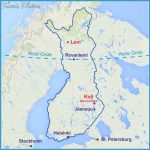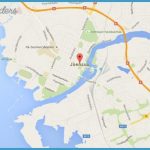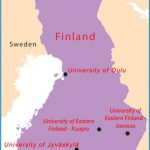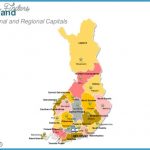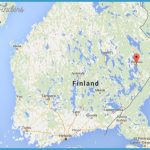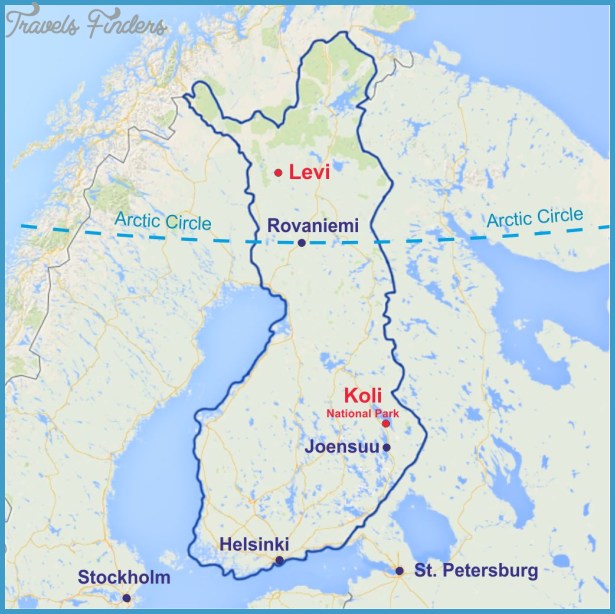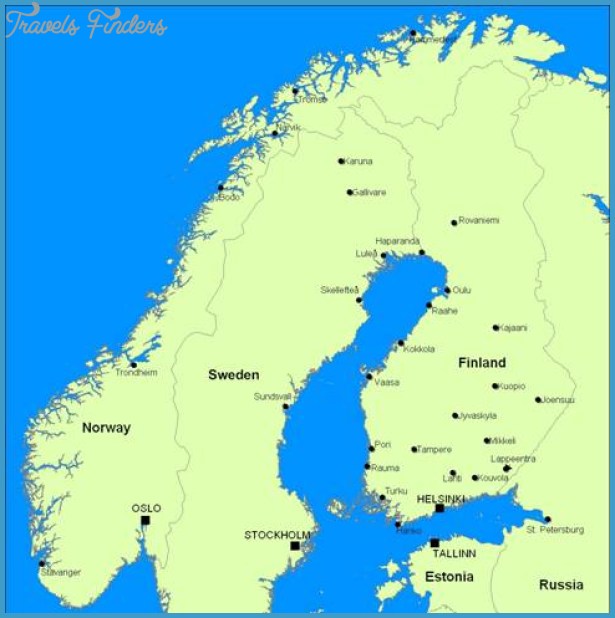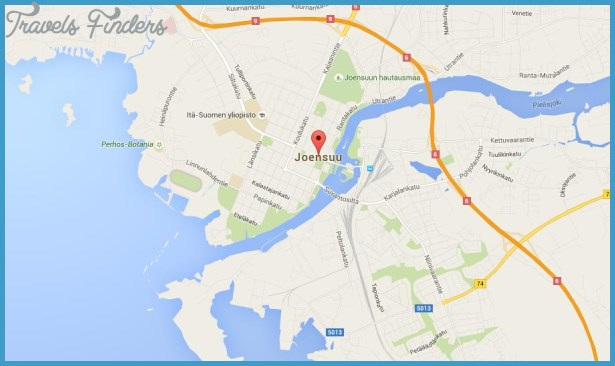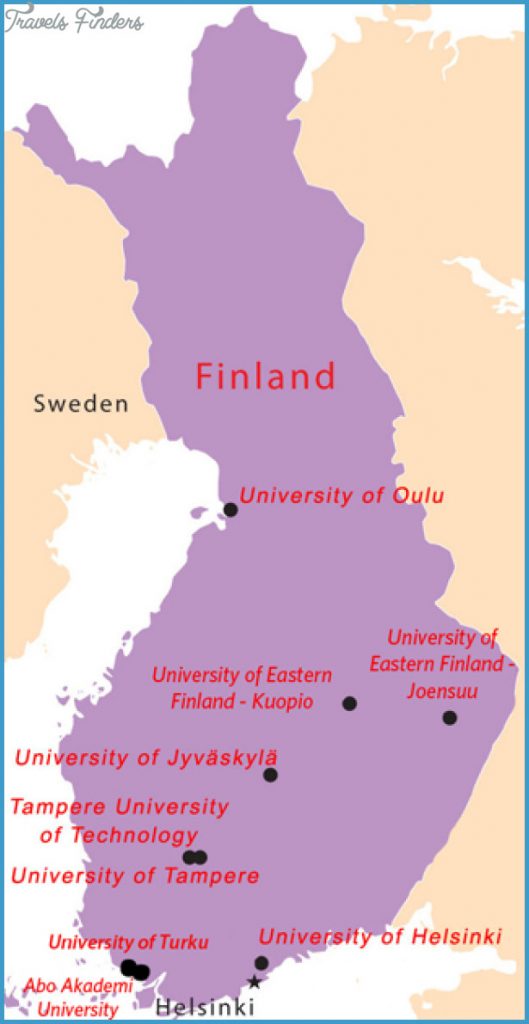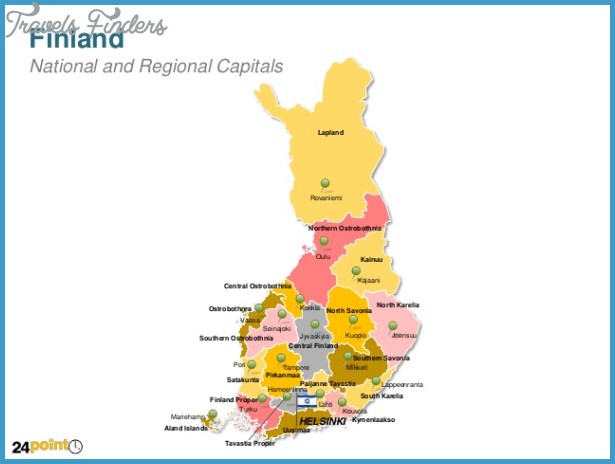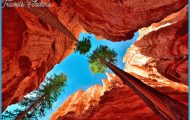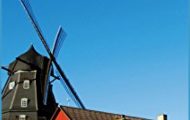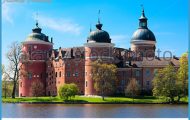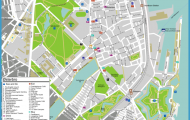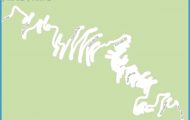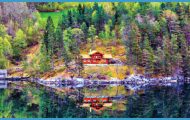EVENTS. Sirmakka, festival of Karelian music (June); Orthodox Festival in llomantsi-Hattuvaara (28 and 29 June and 19 and 20 July in the church, in August at llomantsi-Mustalahti); Huttujuhlat, traditional local festival with open-air dramatic performances (September).
Joensuu, situated at the outflow of the Pielisjoki into the Pyhaselka, on the NE fringe of the Finnish Lake Plateau, was founded in 1848. It is Joensuu a bird’s-eye view now the cultural, administrative and commercial capital of Northern Karelia, and has one of the most recent universities in Finland.
SIGHTS. The Town Hall (by E. Saarinen, 1914), with a massive tower, also houses the Municipal Theatre. Between the Town Hall and the Market Square lies the Freedom Park. Near the Town Hall, on the river, is the quay used by the boats for Savonlinna and Koli and by cruise boats. From this part of the town Saarikatu crosses a bridge on to the island of Niskasaari, from which another bridge leads to llosaari. On this island are a bathing beach and the Karelian House, founded in 1954 to promote Karelian culture (interesting museum). A short distance upstream, on the site of the original town, is the Library (art gallery). Also in this area we find the Eastern Orthodox St Nicholas’s Church, and at the mouth of the river the Hasanniemi open-air theatre (revolving stage), with a camp site and walkers’ hostel close by. Immediately adjoining the camp site is a beach, and there is an indoor swimming pool beside the sports ground across from the hostel.
SURROUNDINGS. 17 km (10 miles) W, on the shores of the Orivesi, near Liperi, is Harila holiday village. 71 km (45 miles) E on Road 74 is llomantsi (Ruuki Hotel, 20 camp site), with an Eastern Orthodox church. SE of the town is the Petkeljarvi Nature Park. 11 km (45 miles) W, between Joensuu and Varkaus, are the Orthodox monastery of Uusi Valamo and nunnery of Lintula ( 92). Koli Hills: 162.

